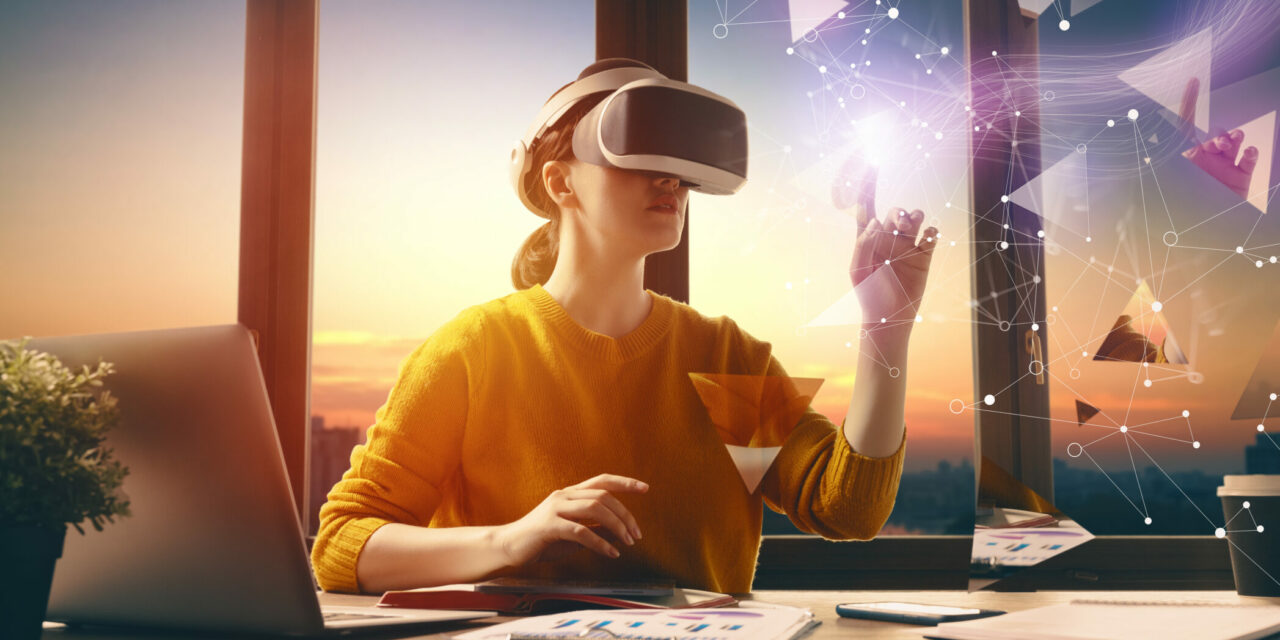In the ever-evolving landscape of technology, the realms of Virtual Reality (VR) and Augmented Reality (AR) have transcended novelty to become powerful tools reshaping the way we perceive and interact with the digital world. As these immersive experiences take center stage, they not only revolutionize entertainment but also leave an indelible mark on industries ranging from healthcare to education. Let’s explore how VR and AR are transforming the way we experience reality.
1. Virtual Reality Unveiled: Virtual Reality immerses users in a computer-generated environment, shutting out the physical world to create an entirely new reality. Whether it’s donning VR headsets for gaming, exploring virtual travel destinations, or undergoing virtual training simulations, the technology transports users to alternate realms with astonishing realism.
2. Augmented Reality Enhancements: Augmented Reality, on the other hand, overlays digital information onto the real world, enriching our perception of the environment. AR applications can be experienced through smartphones, smart glasses, or dedicated AR devices. From interactive advertising to navigation aids, AR seamlessly integrates digital content with our physical surroundings.
3. Gaming Revolution: The gaming industry has been at the forefront of embracing immersive experiences. VR gaming introduces players to fully immersive worlds, where they can interact with the environment and other players in ways previously unimaginable. AR, on the other hand, blends digital elements with the real world, creating engaging and interactive gaming experiences that extend beyond the screen.
4. Transforming Education: VR and AR are revolutionizing education by offering immersive learning experiences. Virtual field trips transport students to historical sites, and AR applications bring textbooks to life, turning static images into interactive 3D models. These technologies cater to diverse learning styles, making education more engaging and effective.
5. Healthcare Innovations: The healthcare industry harnesses VR and AR for various applications, from surgical training simulations to therapeutic interventions. Virtual reality can provide exposure therapy for phobias, while augmented reality aids surgeons by overlaying vital information during procedures. These immersive technologies are enhancing medical training and patient care.
6. Architectural Visualization: VR and AR are transforming how architects and designers visualize projects. Virtual Reality allows clients to experience architectural designs in a lifelike environment before construction begins, while Augmented Reality overlays proposed designs onto existing spaces, aiding in on-site decision-making and collaboration.
7. Workplace Training and Simulation: Virtual Reality is revolutionizing workplace training by providing realistic simulations for various industries. From flight simulations for pilots to emergency response drills for first responders, VR enables hands-on training in a risk-free virtual environment. This immersive approach enhances skill acquisition and performance.
8. Cultural and Entertainment Experiences: Immersive experiences extend beyond traditional forms of entertainment. VR concerts and AR-enhanced museum exhibits provide audiences with unique and interactive cultural experiences. These technologies enable artists and creators to push the boundaries of storytelling, fostering a new era of audience engagement.
9. Challenges and Future Directions: While the potential of VR and AR is vast, challenges remain. Issues such as motion sickness in VR and the need for more intuitive AR interfaces require ongoing attention. As technology continues to advance, the development of lighter, more comfortable hardware and the improvement of content creation tools will further propel the adoption of immersive experiences.
In conclusion, the rise of Virtual Reality and Augmented Reality signifies a paradigm shift in how we engage with the digital world. Beyond entertainment, these technologies are transforming education, healthcare, and various industries, offering immersive experiences that were once confined to the realm of science fiction. As VR and AR take center stage, the line between the virtual and the real continues to blur, opening up new frontiers of possibilities and shaping the way we perceive and interact with our increasingly digitized reality.





